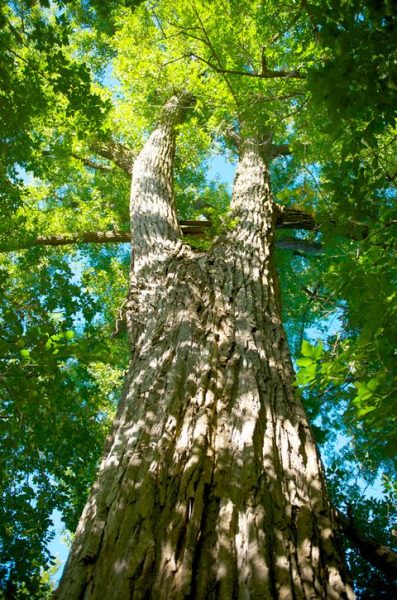Not all trees can handle living next to the Cannon River this time of year. Trees that thrive in Minnesota’s floodplains must survive when the river bursts its banks each spring, dousing them in deep water. The eastern cottonwood, Populus deltoides, does that with ease. In Minnesota, cottonwoods are known for their love of water and for the fluffy, white, cotton-like seeds they produce in May. As the largest tree in Minnesota, eastern cottonwoods can grow up to 13 feet a year as young trees, and can reach up to 10 feet in diameter at breast height. Mature cottonwoods sport gray, furrowed bark and have four inch-wide triangle-shaped leaves. These trees dominate Minnesota riversides, and can grow massive even next to the humble Spring Creek (look near the tennis courts).
Cottonwoods serve important ecological roles in the state. Cottonwoods are often the first species to settle on newly-exposed sand and soil, which then creates the right conditions for other organisms to move into the space. When the tree’s brittle wood breaks, nooks form between their trunk and branches which provide ideal nesting cavities for species of birds, squirrels and insects. Cottonwoods clean water for fish, and are the preferred nests for bald eagles because of the impressive heights they reach.
Yet the familiar cottonwood has recently struggled in the Upper Midwest. In a 2011 survey, the National Park Service could not find any young cottonwoods along the Mississippi river in Minnesota. In the Twin Cities metro area, cottonwoods have not been reproducing for at least twenty years. Groups such as Minnesota GreenCorps, the University of Minnesota and Mississippi Park Connection have been working to understand the drop in successful cottonwood reproduction. Some possible causes: changes in precipitation caused by climate change, lock-and-dam systems or maybe even their consumption by deer and impact from invasive species. Plantings seem to help cottonwoods return, but the future of these trees in Northfield and around the state is cast in uncertainty.











